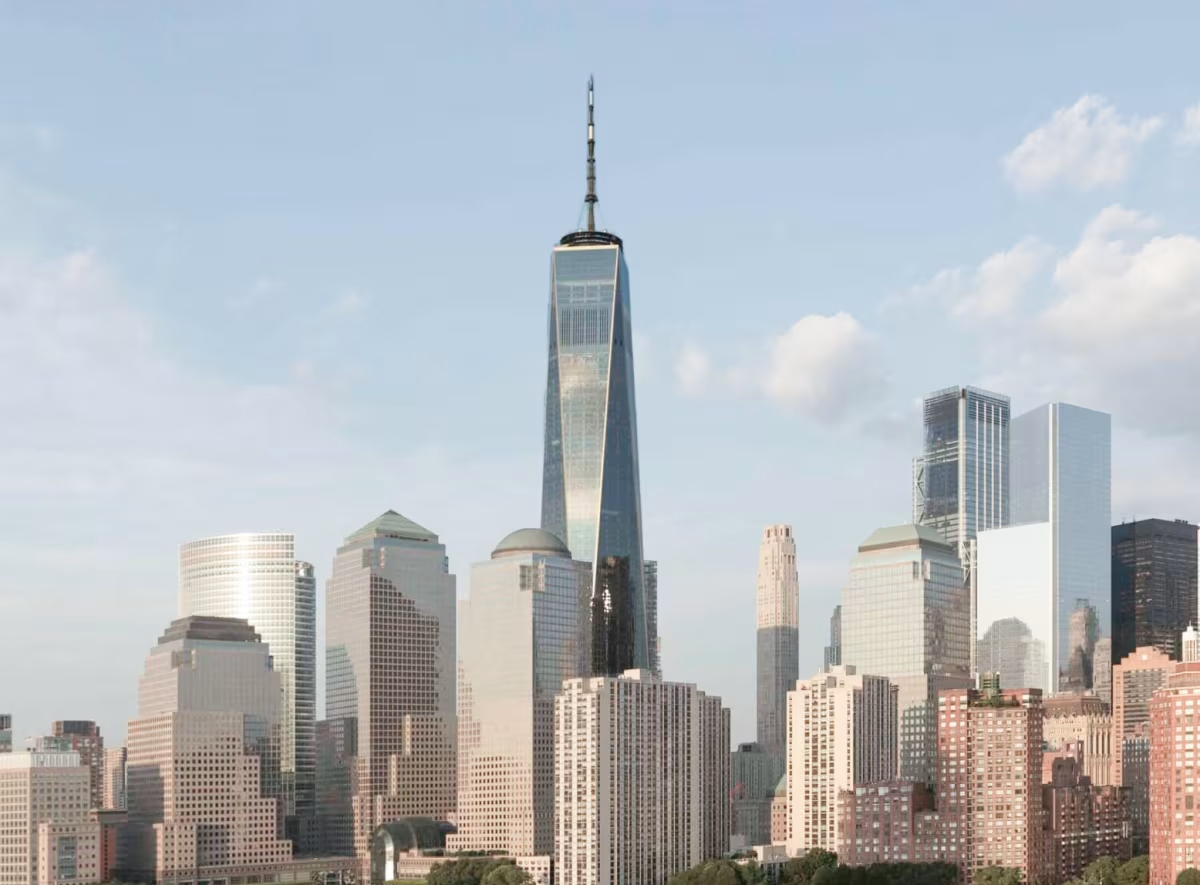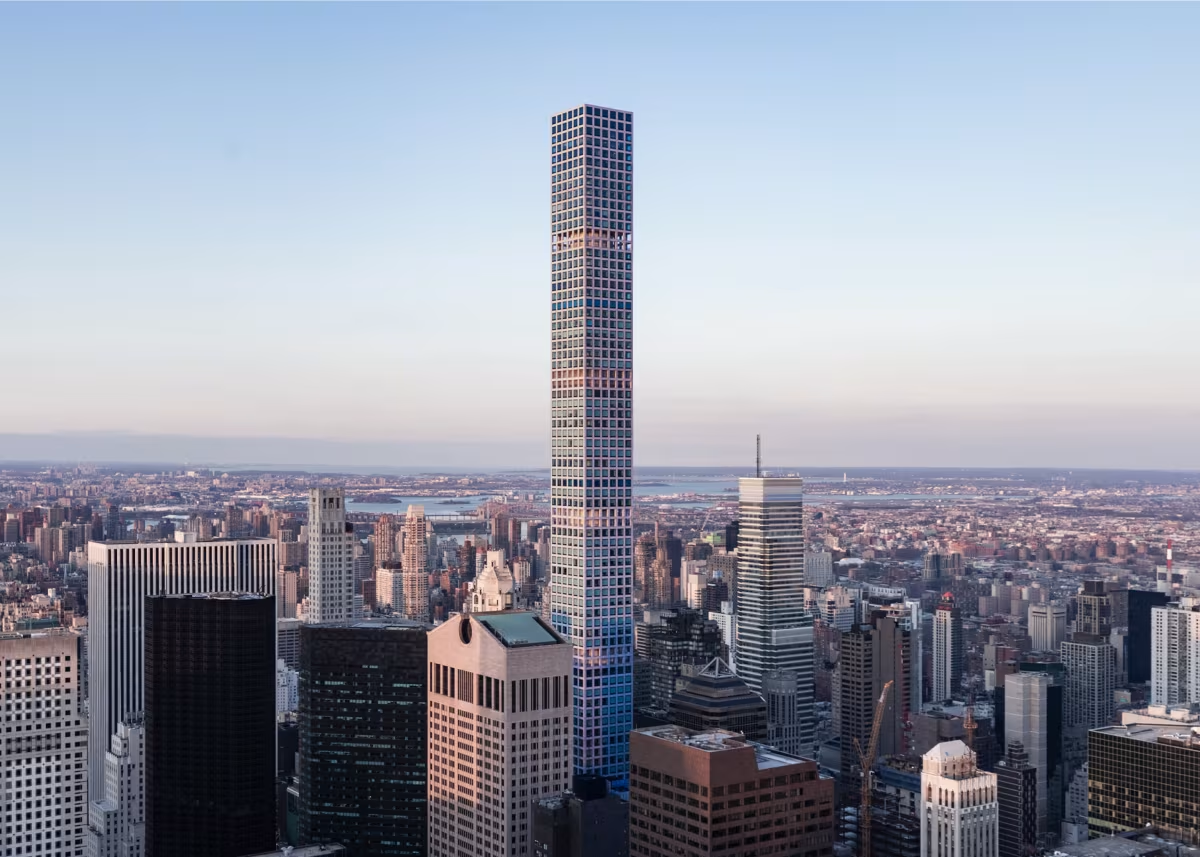One World Trade Center vs 432 Park Avenue


Comparing the One World Trade Center and the 432 Park Avenue is interesting because they both stand in New York, NY, and were completed just one year apart, but they were designed by different architects.
This offers a unique glimpse at how rival designers approached projects in the same city during the same era.
Height & Size
The One World Trade Center is clearly the larger tower of the two, both in terms of height and number of floors. It rises to 1775ft (541m) with 104 floors above ground, while the 432 Park Avenue reaches 1394ft (425m) with 85 floors above ground.
One World Trade Center also offers more total built-up area, a total fo 3,500,000 sqf (325,161m2), which is about 3,087,366 sqf (286,826m2) more than what the 432 Park Avenue offers.
Of course, each project may have faced different briefs or regulatory constraints, which we don't really know about and could also explain the outcome.
Architectural Style
Both the One World Trade Center and the 432 Park Avenue were designed in line with the aesthetic conventions of the Contemporary style.
At the time, this style was at the height of its popularity. So both Skidmore, Owings & Merrill and Rafael Viñoly followed what was in many ways expected of them, producing designs that fit comfortably within contemporary architectural norms, rather than breaking with convention.
Uses
The One World Trade Center is primarily commercial, while the 432 Park Avenue is primarily residential.
The 432 Park Avenue offers 104 residential units.
Structure & Facade
Both towers share the same structural solution, a Framed Tube In Tube system.
A tube-in-tube system combines a reinforced central core with a perimeter of columns connected by floor slabs. This arrangement creates a stiff structure that resists both vertical and lateral forces efficiently.
However, when it comes to the facade, both buildings use different approaches. The One World Trade Center uses a Curtain Wall facade, while the 432 Park Avenue uses a Window Wall facade.
A Curtain Wall facade like the one seen in the One World Trade Center uses a lightweight glass curtain wall hung from the structure, while a window-wall facade like the one seen in the 432 Park Avenue uses panels fitted between floor slabs, leaving slab edges visible.
| One World Trade Center | 432 Park Avenue | |
|---|---|---|
| Skidmore, Owings & Merrill | Architect | Rafael Viñoly |
| 2007 | Design Ended | 2011 |
| 2006 | Construction Started | 2011 |
| 2014 | Year Completed | 2015 |
| Contemporary | Architectural Style | Contemporary |
| Commercial | Current Use | Residential |
| 104 | Floors Above Ground | 85 |
| 5 | Floors Below Ground | 3 |
| 386 | Last Floor Height | 392 |
| 541 m | Height (m) | 425 m |
| 325161 | Built-up Area (m²) | 38335 |
| 73 | Number of Elevators | 11 |
| Framed Tube In Tube | Structure Type | Framed Tube In Tube |
| Steel | Vertical Structure Material | Reinforced Concrete |
| Poured Concrete Over Metal Decking | Horizontal Structure Material | Reinforced Concrete |
| No | Facade Structural? | Yes |
| Glass, Steel | Main Facade Material | Concrete, Glass |
| Tishman Construction | Main Contractor | Lendlease Corporation |
| Port Authority Of New York And New Jersey | Developer | CIM Group And Macklowe Properties |
| Mathews Nielsen Landscape Architects And Architects Peter Walker Landscape Architecture | Landscape Architect | Zion Breen & Richardson Associates |
| Thyssenkrupp | Elevator Company | Schindler |
| Jaros Baum & Bolles | MEP Engineer | WSP Flack + Kurtz |
| WSP Group | Structural Engineer | WSP Cantor Seinuk |
| Isreal Berger And Associates | Facade Consultant | Enclos Corp. |
| NY | State | NY |
| New York | City | New York |
| 285 Fulton Street | Address | 432 Park Avenue |